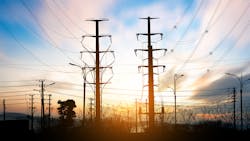ISO New England Outlook: Developing Decarbonized Grid will Require Four Pillars
Developing and maintaining a decarbonized electric grid will require significant amounts of clean energy, balancing resources, energy adequacy, and robust transmission, ISO New England explains in its 2022 Regional Electricity Outlook (REO). These four pillars, and the role of the ISO and regional stakeholders in ensuring their readiness to support the greener grid of the future, are the focus of this year’s REO, On the Horizon, published on the 25th anniversary of the ISO’s inception.
“Over the course of the next two decades, our region’s electric grid will likely more than double in size, expanding to incorporate vast amounts of renewable resources and serve increasing demand for electricity as more sectors decabonize,” said Gordon van Welie, president and CEO of ISO New England, and Cheryl LaFleur, board chair, in a joint letter within the REO. “This transformation is already well underway in the region’s power system, and the impact it will have on New England for generations to come cannot be overstated.”
Four pillars to support a greener grid
Drawing on 25 years of experience planning the region’s power system, as well as expertise from the industry at large, the ISO has identified four pillars that are critical to achieving and maintaining a clean, decarbonized electric system:
- Significant amounts of clean energy to power the economy with a greener grid
- Balancing resources that keep electricity supply and demand in equilibrium
- Energy adequacy — a dependable energy supply chain and/or a robust energy reserve to manage through extended periods of severe weather or energy supply constraints
- Robust transmission to integrate renewable resources and move clean electricity to consumers across New England
The REO explores these foundational ideas, along with the ways in which the ISO is supporting each one through the execution of its responsibility to operate the region’s electricity grid, administer the wholesale electricity markets, and plan for a reliable power system. In their letter, van Welie and LaFleur reflect on the progress already made toward achieving the region’s clean energy future and the challenges that remain ahead.
“Over the last 25 years, ISO New England has laid the foundation to support the four pillars discussed in this report and the region is already well along the path to a clean energy future,” they write. “As we keep our eyes on the horizon, New England has an opportunity to serve as a model for what a sustainable, reliable, and efficient transition can look like.”
